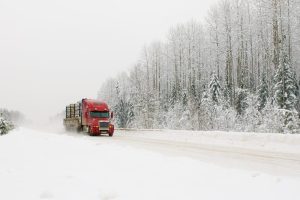
When rigs stop running in frigid weather, bringing your semi trailer mover to a screeching halt, fuel gelling is often the first thing blamed. Typically, however, it has to be -15 degrees before fuel begins to gel, so what gives?
Is it Really Gelling?
With gelling, ice crystals form from condensation, followed by paraffin wax dropping out of fuel. Only after that does gelling occur. This often starts in fuel filters, when trucks haven’t run long enough to warm fuel. Though many are quick to blame poor fuel and failure to have the right additives, it’s ultimately the result of poor planning.
With the Right Tactics, You Can Avoid the Gelling ‘Blame Game’
Plan ahead.
People driving in the northern states/Canada don’t have issues with gelling because they manage the predictable. Don’t rely on ‘winter blends.’ Know what you’re getting. With frigid temperatures YOU WILL need water-absorbers and kerosene/jet fuel, since additives only work down to 5-degrees. Take control: watch 10-day weather forecasts and TELL fuel suppliers the percentage of kerosene you want:
10 degrees: 10% blend
0 degrees: 20% blend
-5 to -10 degrees: 30% blend
-15 degrees: 40% blend
-20 degrees: 50% blend
Tanks on location?
Keep 80% kerosene on hand for upcoming temperature dips to mix with current tank gallons on-hand.
On-the-road purchases?
ASK for kerosene percentages.
Maintain en-route
Vacuum or drain the condensation buildup (water) from the tanks every night.
Crank-up the heat
Consider the addition of an in-tank fuel heater plumbed via heater core or an electric/coolant-fueled heater.
No shortcuts
Do NOT change micron ratings on fuel filters.
Don’t let downed rigs gum up the works. Keep things moving with proper planning and the help of a semi trailer mover from DJ Products today.


